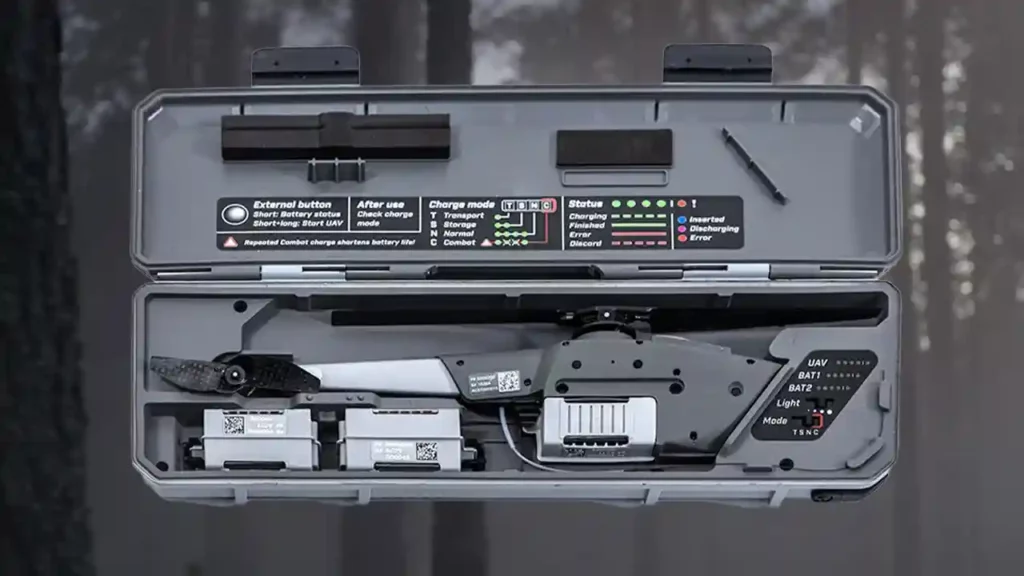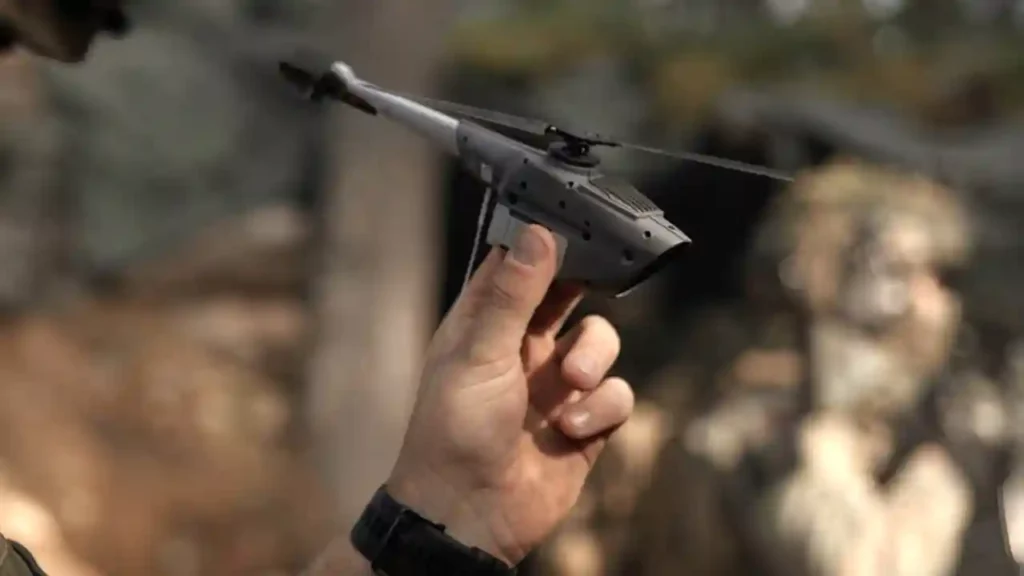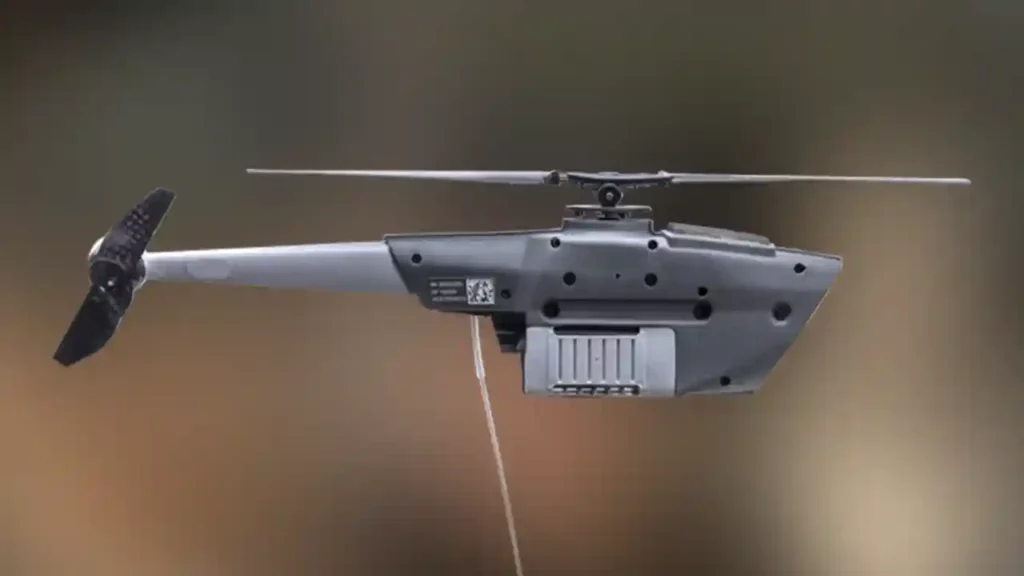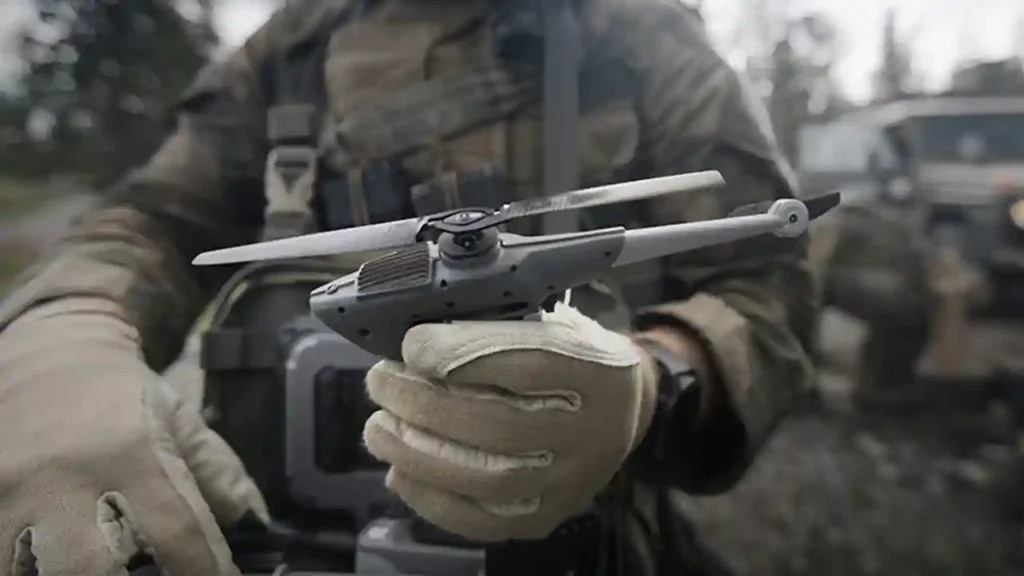Dronelost.com – Imagine you are a soldier on a mission in a hostile territory. You need to scout the area ahead, but you don’t want to expose yourself or your team to enemy fire. You need a way to see what’s around the corner, behind the wall, or over the hill, without being seen or heard. You need a Black Hornet 4 drone.
The Black Hornet 4 drone can provide you with covert situational awareness in any environment. The Black Hornet 4 drone is small, lightweight, stealthy, and silent, making it hard to detect by the enemy.
We will review the Black Hornet 4 drone, its specs, features, price, pros and cons, and why it might be the best choice for your needs. We will also show you some examples of how the Black Hornet 4 drone can be used in different scenarios.
If you are interested in learning more about the Black drone, a nano-drone that offers improved range, endurance, signature and imagery data for covert situational awareness, then keep reading. You will be amazed by what this tiny drone can do for you.
What is the Black Hornet 4 drone?

The Black Hornet 4 drone is a single rotor nano-drone that weighs only 70 grams and measures 16.8 cm in length and 3.4 cm in width. It is designed and built by Teledyne FLIR Defense, a company that specializes in thermal imaging and unmanned aerial systems. Here are some of the specs of the Black Hornet 4 drone:
- Weight: 70 grams
- Length: 16.8 cm
- Width: 3.4 cm
- Endurance: more than 30 minutes
- Range: over two kilometers
- Speed: up to 10 m/s
- Wind tolerance: up to 25 knots
- Thermal imager: high-resolution
- Color camera: 12-megapixel
- Obstacle avoidance: yes
- Battery: advanced and smart
- Data link: software-defined radio
The Black Hornet 4 drone is the successor of the Black Hornet 3 drone, which was introduced in 2018 and has been widely adopted by the U.S. Army, the British Army, the Norwegian Army, and other allied forces
The Black Hornet 4 drone is intended to provide dismounted soldiers and small units with immediate covert situational awareness, especially in urban environments, complex terrain, and GPS-denied areas.
It can be launched in less than 20 seconds and can fly for more than 30 minutes, with a range of over two kilometers. It can also withstand wind speeds of up to 25 knots and operate in temperatures ranging from -10°C to 50°C.
The drone is equipped with a high-resolution thermal imager and a 12-megapixel color camera, which can deliver crisp video and still images to the operator via a handheld controller.
The operator can also switch between different modes, such as day, night, and thermal, and zoom in and out of the target. The drone has a very low visual and audible signature, making it hard to detect by the enemy. It can also avoid obstacles and fly autonomously using a pre-programmed route or a point-and-click interface.
The drone is part of the Black Hornet PRS, which consists of two or four drones, a controller, a display, a docking station, and a transport case. The system can be carried by a single soldier on a utility belt or in a backpack, and can be integrated with other platforms, such as vehicles, robots, or command and control systems.
What are the features of the Black Hornet 4 drone?

The Black Hornet 4 drone has several features that make it a unique and valuable asset for military and security operations. Some of these features are:
- Covert situational awareness: The Black Hornet 4 drone can provide real-time information about the surroundings, such as enemy locations, threats, terrain, buildings, and infrastructure, without exposing the operator or the unit to danger. It can also assess weapon effects and confirm or deny target identification.
- Improved performance: The Black Hornet 4 drone has improved flight performance compared to its predecessor, with longer endurance, greater range, higher speed, and better stability. It can also fly in more challenging conditions, such as low light, dust, smoke, fog, and rain.
- Enhanced imagery: The Black Hornet 4 drone has enhanced imagery capabilities, with a new thermal imager that can detect heat signatures and a new color camera that can capture high-quality images and videos. The operator can also adjust the brightness, contrast, and color of the images, and use digital zoom and stabilization features.
- Obstacle avoidance: The Black Hornet 4 drone has a new obstacle avoidance feature that allows it to detect and avoid obstacles in its path, such as trees, wires, poles, and walls. This feature increases the safety and reliability of the drone, and reduces the cognitive load on the operator.
- Advanced battery: The Black Hornet 4 drone has a new advanced battery that extends the flight time and reduces the charging time of the drone. The battery also has a smart management system that monitors the health and status of the battery, and alerts the operator when the battery is low or needs to be replaced.
What is the price of the Black Hornet 4 drone?

The price of the Black Hornet 4 drone is not publicly available, as it is a military-grade product that is sold to government and defense customers only. However, based on the previous contracts and orders for the Black Hornet PRS, we can estimate that the price of the drone is in the range of tens of thousands of dollars per unit.
For example, in 2018, the U.S. Army awarded Teledyne FLIR a contract worth $39.6 million for the delivery of 600 Black Hornet 3 systems, which translates to about $66,000 per system. In 2020, the U.S.
Army awarded Teledyne FLIR another contract worth $20.6 million for the delivery of 140 Black Hornet 3 systems, which translates to about $147,000 per system. In 2021, the U.S. Army awarded Teledyne FLIR a five-year contract worth up to $94 million for additional Black Hornet systems, which could include the drone.
The price of the drone may vary depending on the number of units ordered, the configuration of the system, the delivery schedule, and other factors. The price may also change over time, as the technology evolves and the demand increases.
What are the pros and cons of the Black Hornet 4 drone?

The Black Hornet 4 drone has many advantages and disadvantages, depending on the perspective and the context of the user. Here are some of the pros and cons:
Pros
- Small and lightweight: The drone is one of the smallest and lightest drones in the world, making it easy to carry, deploy, and conceal. It can fit in the palm of your hand, and can be stored in a pocket or a pouch. It can also be attached to other platforms, such as vehicles, robots, or helmets, without adding much weight or bulk.
- Stealthy and silent: The drone has a very low visual and audible signature, making it hard to spot or hear by the enemy. It can fly close to the ground, behind buildings, or under trees, and blend in with the environment. It can also operate in low light, dust, smoke, fog, and rain, and avoid detection by radar or infrared sensors.
- Easy and intuitive: The drone is easy and intuitive to use, requiring minimal training and experience. It can be launched in less than 20 seconds, and can be controlled by a handheld device with a touch screen and a joystick. The operator can also use a point-and-click interface, or a pre-programmed route, to direct the drone to the desired location. The drone can also fly autonomously, and return to the operator or the docking station when the mission is completed.
- Versatile and adaptable: The drone is versatile and adaptable, capable of performing various missions and tasks, such as reconnaissance, surveillance, target acquisition, force protection, and casualty evacuation. It can also be integrated with other systems and platforms, such as command and control, intelligence, and communication systems, to enhance the situational awareness and decision making of the user. The drone can also be customized and upgraded, with different payloads, sensors, and software, to meet the specific needs and requirements of the user.
Cons
- Expensive and exclusive: The drone is expensive and exclusive, available only to government and defense customers, and not to the general public or the commercial market. The price of the drone is in the range of tens of thousands of dollars per unit, which may be prohibitive for some users. The drone is also subject to export restrictions and regulations, which may limit its availability and accessibility to some countries and regions.
- Vulnerable and limited: The drone is vulnerable and limited, despite its improved performance and features. The drone is still susceptible to damage or loss, due to accidents, malfunctions, interference, or enemy actions. The drone is also limited by its size, weight, and power, which may affect its speed, range, endurance, and payload capacity. The drone may also face challenges in some environments, such as high altitude, extreme temperature, or strong electromagnetic fields.
The Black Hornet 4 drone is a remarkable nano-drone that offers improved range, endurance, signature and imagery data for covert situational awareness. It is small, lightweight, stealthy, and silent, making it hard to detect by the enemy.
It is also easy, intuitive, versatile, and adaptable, capable of performing various missions and tasks, and integrating with other systems and platforms. However, the Black Hornet 4 drone is also expensive, exclusive, vulnerable, and limited, which may pose some challenges and limitations for its users.
